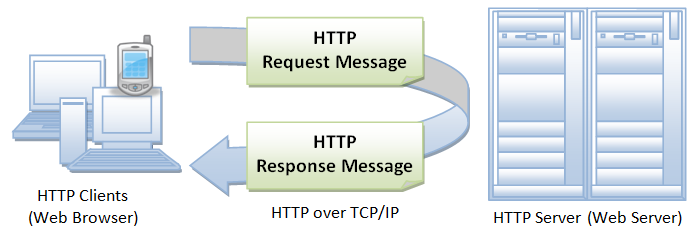


However, HTTP can be adapted to use unreliable protocols such as the User Datagram Protocol (UDP), for example in HTTPU and Simple Service Discovery Protocol (SSDP). Its definition presumes an underlying and reliable transport layer protocol, thus Transmission Control Protocol (TCP) is commonly used. HTTP is an application layer protocol designed within the framework of the Internet protocol suite. To allow intermediate HTTP nodes (proxy servers, web caches, etc.) to accomplish their functions, some of the HTTP headers (found in HTTP requests/responses) are managed hop-by-hop whereas other HTTP headers are managed end-to-end (managed only by the source client and by the target web server). HTTP proxy servers at private network boundaries can facilitate communication for clients without a globally routable address, by relaying messages with external servers. Web browsers cache previously accessed web resources and reuse them, whenever possible, to reduce network traffic. High-traffic websites often benefit from web cache servers that deliver content on behalf of upstream servers to improve response time. HTTP is designed to permit intermediate network elements to improve or enable communications between clients and servers.
#Http client server software
Other types of user agent include the indexing software used by search providers ( web crawlers), voice browsers, mobile apps, and other software that accesses, consumes, or displays web content. The response contains completion status information about the request and may also contain requested content in its message body.Ī web browser is an example of a user agent (UA). The server, which provides resources such as HTML files and other content or performs other functions on behalf of the client, returns a response message to the client. The client submits an HTTP request message to the server. A web browser, for example, may be the client whereas a process, named web server, running on a computer hosting one or more websites may be the server. HTTP functions as a request–response protocol in the client–server model. URL beginning with the HTTP scheme and the WWW domain name label HTTP/3 has lower latency for real-world web pages, if enabled on the server, load faster than with HTTP/2, and even faster than HTTP/1.1, in some cases over 3× faster than HTTP/1.1 (which is still commonly only enabled).

Support for HTTP/3 was added to Cloudflare and Google Chrome first, and is also enabled in Firefox. Like HTTP/2, it does not obsolesce previous major versions of the protocol. HTTP/3 uses QUIC instead of TCP for the underlying transport protocol. It is now used by over 25% of websites and is supported by many web browsers (over 75% of users). HTTP/3, the successor to HTTP/2, was published in 2022. It is also supported by major web servers over Transport Layer Security (TLS) using an Application-Layer Protocol Negotiation (ALPN) extension where TLS 1.2 or newer is required. It is now used by 41% of websites and supported by almost all web browsers (over 97% of users). HTTP/2, published in 2015, provides a more efficient expression of HTTP's semantics "on the wire". Its secure variant named HTTPS is used by more than 80% of websites. It evolved (as version 1.1) in 1997 and then its specifications were updated in 1999, 2014, and 2022. HTTP/1 was finalized and fully documented (as version 1.0) in 1996. ĭevelopment of early HTTP Requests for Comments (RFCs) started a few years later and it was a coordinated effort by the Internet Engineering Task Force (IETF) and the World Wide Web Consortium (W3C), with work later moving to the IETF. That first version of HTTP protocol soon evolved into a more elaborated version that was the first draft toward a far future version 1.0. HTTP is the foundation of data communication for the World Wide Web, where hypertext documents include hyperlinks to other resources that the user can easily access, for example by a mouse click or by tapping the screen in a web browser.ĭevelopment of HTTP was initiated by Tim Berners-Lee at CERN in 1989 and summarized in a simple document describing the behavior of a client and a server using the first HTTP protocol version that was named 0.9. The Hypertext Transfer Protocol ( HTTP) is an application layer protocol in the Internet protocol suite model for distributed, collaborative, hypermedia information systems. RFC 9204 HTTP/3: QPACK: Field Compression.RFC 8441 HTTP/2: Bootstrapping WebSockets with HTTP/2.RFC 8336 HTTP/2: The ORIGIN HTTP/2 Frame.

RFC 8164 HTTP/2: Opportunistic Security for HTTP/2.RFC 7541 HTTP/2: HPACK Header Compression.


 0 kommentar(er)
0 kommentar(er)
